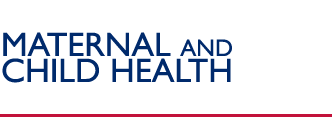Polio Eradication Initiative (PEI): Results Framework
The USAID-PEI strategic objective is to support achieving and sustaining the global eradication of polio in selected countries and regions, in ways that contribute to the development of sustainable immunization and disease control. Indicators for this objective include the number of polio cases (virologic and compatible by expert committee) and the number of countries with OPV3 coverage (children receiving three doses of oral polio vaccine) greater than 90 percent.
The PEI has six strategies within its results framework:
- Building Effective Partnerships
- Strengthen Selected Systems
- Support Supplemental Immunization
- Improve Surveillance
- Support Certification, Containment and Post-Certification
- Improve Information Collection and Use
1) Build Effective Partnerships
First-Level Results and Indicators
Effective public and private partnerships to support the implementation of polio eradication, immunization and other disease control programs established and operational. Indicators for these results include:
- Number of countries with Interagency Coordinating Committees (ICCs) with regular participation of all agencies that participate in polio and immunization activities. (target 100 percent)
- Number of countries with sub-national ICCs
- Number and percentage of ICC meetings with minutes circulated to all participants (target 100 percent)
- Number and percentage of recommendations adopted by ICC from technical consultative groups (TCGs) and expert reviews (target 80 percent)
- Number of USAID Bureaus and Missions supporting polio, immunizations and Integrated Disease Surveillance and Response (IDS) (target 100 percent)
2) Strengthen Selected Systems
First-Level Results and Indicators
Strengthened selected immunization support systems, at the national and sub-national levels, and in the public and private sectors, to achieve polio eradication, immunization and other disease control goals. Indicators for these results include:
- Number of countries with annual and five-year plans and budgets for polio, immunizations and disease control (target 100 percent)
- Percentage of districts with OPV3 coverage (children receiving three doses of oral polio vaccine) greater than 90 percent (target 100 percent)
- Percentage of districts with DPT3 coverage (children receiving the final dose of the combined diphtheria, pertussis and tetanus vaccine) greater than 80 percent (target 80 percent)
3) Support Supplemental Immunization
First-Level Results and Indicators
Improved quality and implementation of supplemental polio immunization (including National Immunization Days - NIDs, Sub-National Immunization Days - SNIDs, and mopping up) and, when appropriate, other interventions and vaccines. Indicators for these results include:
- Number of districts with detailed annual microplans with maps and communication
- Percentage of infants vaccinated as a proportion of the total number immunized
- Percentage of zero-dose children
- Percentage of households not visited by vaccination teams
- Percentage of eligible children missed
- Percentage of districts with timely availability of funds
- Percentage of vaccinators with knowing proper use of vaccine vial monitors (VVMs)
- Percentage of caretakers who had heard about the supplemental immunization activities (SIA)
- Percentage of caretakers who know child should be fully immunized before first birthday
4) Improve Surveillance
First-Level Results and Indicators
Improved quality of Acute Flaccid Paralysis (AFP) surveillance and response system that is integrated with surveillance for other priority diseases. Indicators for these results include:
- Number of countries with a non-polio AFP rate of 1/100,000 in children 0-15 years
- Percentage of districts by country with full reporting
- Number of countries with 80 percent of stool samples collected within 14 days of onset of paralysis
- Percentage of cases with 60-day follow up
- Number of countries with expanded surveillance (VPD and/or IDS)
- Number countries using community-based surveillance
- Number of countries with communication plans for AFP
5) Support Certification, Containment and Post-Certification
First-Level Results and Indicators
Support polio eradication certification at all levels and containment of poliovirus and post-certification policy development. Indicators for these results include:
- Number of countries with national certification data presented to regional Certification Committee
- Number of regions certified polio-free
- Number of circulating vaccine-derived polioviruses (cVDPVs) and immunodeficient excretors of vaccine-derived polioviruses (iVDPVs) identified
- Number of polio-free countries completing phase 2 containment, including validation
- Number of countries with post-certification plans and budgets for surveillance, outbreaks and communication
- Policy options developed and consensus reached with key stakeholders by 2005
- Number of countries with budget and five-year plan developed for post-certification era
6) Improve Information Collection and Use
First-Level Results and Indicators
Timely collection and use of information to continuously document and improve the quality of polio eradication, routine immunization and diseases of public health importance. Indicators for these results include:
- Number of countries with process assessments that are reviewed and used by the ICC, including communications
- Number of research studies completed on time
- Number of countries using data from the polio program to improve other programs
- Number of countries using independent monitors
- Number of studies/special analyses conducted to document and/or improve our understanding of the impact of polio
Related Links
|


